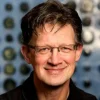Tutorials

TUTORIAL 01 – Wed June 18 – 08h30 / 09h15
LARS NILSSON
Asymmetric flow field-flow fractionation (AF4) coupled to synchrotron small angle x-ray scattering (SAXS) – A new tool for characterization of proteins and nanoparticles
Lars Nilsson has a background in surface and colloid science, receiving his PhD from Lund University, Sweden in 2007. The thesis subject was emulsification and macromolecular emulsifiers. The work brought him into contact with field-flow fractionation under the mentorship of Professor emeritus Karl-Gustav Wahlund, who pioneered asymmetric flow field flow fractionation (AF4). After a period in the biotech industry, he returned to Lund University and increasingly engaged in AF4 methodology and applications. In 2012 a spinoff company offering AF4 and complementary techniques as a contract service was founded. In 2020 he became full Professor in Formulation Technology at Lund University. His current research focus is on the formulation of therapeutic proteins, lipid nanoparticles and biomolecular corona formation on nanoparticles as well as development and application of AF4 methodology. This involves the combination of AF4 with synchrotron small angle x-ray scattering (SAXS) and small angle neutron scattering (SANS).
Asymmetric Flow-Field Flow Fractionation (AF4) for the characterization of biopharmaceuticals
Asymmetric flow field-flow fractionation (AF4) is a powerful size-based separation technique that has been used for several decades in the analysis and characterization of biopharmaceuticals. Unlike traditional chromatographic methods, AF4 operates without a stationary phase, making it particularly advantageous for analyzing delicate or complex macromolecules and nanoparticles that may otherwise be affected by interactions with a solid matrix. AF4 has proven especially useful when more widely used separation techniques, such as size-exclusion chromatography (SEC), encounter limitations. SEC, while widely employed, may struggle with samples that include broad or multimodal size distributions, particularly those containing large analytes or aggregates. In contrast, AF4 provides a broader dynamic range, allowing for the effective separation of nanoparticles, protein aggregates, and other macromolecular complexes that exceed the size limits of SEC. This makes AF4 an invaluable tool for researchers working with biopharmaceutical formulations, where precise size characterization is critical for ensuring product efficacy and safety.
Early applications of AF4 in biopharmaceuticals primarily focused on the separation and analysis of protein oligomers and aggregates, which are key factors in drug stability, efficacy and immunogenicity. In recent years, there has been a significant surge of interest in AF4 across a broader scientific community, largely driven by the growing emphasis on nanoparticle-based drug delivery systems. Nanoparticles, including lipid and polymeric nanoparticles, and viral vectors, play a crucial role in modern drug development. The ability of AF4 to accurately fractionate nanoparticle size distributions is positioning it as a key analytical tool in this rapidly evolving field.
What to Expect from This Tutorial
This tutorial will provide an overview of the fundamental principles of AF4, explaining how the technique operates and highlighting its key advantages and limitations compared to other separation methods. Additionally, example applications of AF4 within biopharmaceutical research will be explored, showcasing its versatility.
By the end of this tutorial, attendees will have gained an insight into AF4’s role in biopharmaceutical analysis and how it can be effectively applied to address challenges that other separation techniques may struggle to overcome.
- - -
Lars Nilsson - Dept of Process and Life Science Engineering, Lund University, Lund, Sweden lars.nilsson@ple.lth.se

TUTORIAL 02 – Wed June 18 – 10h45 / 11h30
TIM CAUSON
Ion mobility-mass spectrometry and its hyphenation
Tim Causon is an Associate Professor at Institute of Analytical Chemistry, BOKU University in Vienna, Austria. He is the co-ordinator of the MSCA Doctoral Network “MobiliTraIN” (Ion Mobility Mass Spectrometry Training Network, www.mobilitrain.eu). His main areas of research are liquid chromatography, molecular mass spectrometry, and ion mobility-mass spectrometry (IM-MS) for diverse analytical method development challenges and fundamental studies of ionisation behaviour of small molecular ions. Current research topics include development of methods for optimizing upstream (e.g., microbial cell factories) and downstream (e.g., purification) ends of the bioprocessing continuum, high-resolution ion mobility separation using Structures for Lossless ion Manipulation (SLIM), and coordinated efforts toward harmonization of IM-MS measurement and reporting standards.
Introduction to IM theory, hyphenated IM-MS instrument technology, analytical applications
As a separation technique, ion mobility (IM) complements existing analytical methods as it involves millisecond-timescale separations of gas phase ions according to their structure and not only their mass/charge. Combined with mass spectrometry (MS), IM-MS is now a next generation technology that can be applied to very diverse analytical applications especially when hyphenated with liquid-phase separation techniques. This tutorial will introduce the basics of IM theory, the differences between LC-MS and LC-IM-MS acquisition and show how collision cross sections (CCS) from IM-MS measurements can be used to support the identification of unknowns. Principles of the most important IM-MS technologies will be introduced, and hyphenated application examples from diverse fields (e.g., food, metabolomics, environmental analysis) will be used to highlight how IM-MS can be successfully applied in analytical methods.


TUTORIAL 03 – Wed June 18 – 14h15 / 15h00
SZABOLCS FEKETE
MATEUSZ IMIOLEK
Chromatographic strategies for the analytical characterization of cell and gene therapy products
Szabolcs Fekete, Consulting Scientist, Cell and Gene Therapy, Consumables at Waters Corporation
Szabolcs Fekete received his PhD in Analytical Chemistry from the Technical University of Budapest. He worked in analytical R&D in the pharmaceutical industry for 10 years, then joined the University of Geneva in Switzerland as a research associate. He joined Waters Corporation in 2021 and is now a consulting scientist. His current interests include separations of new chemical modalities, fundamentals of chromatography, column technology and new method development approaches. He has co-authored ~200 publications (including journal articles, book chapters and handbooks).
Mateusz joined Waters in 2022 as an Application Scientist where he has been studying challenges associated with characterizing gene therapeutics and ensuring that new Waters products are fit for this purpose. Before that, he completed his academic training (PhD + postdoc) in bioorganic chemistry, which allows him to apply detailed molecular insights during development of new columns and assays carefully designed for such analytes.
Working in a close collaboration with the Institute of Pharmaceutical Sciences of Western Switzerland, he has been advancing LC-based methods (SEC, IP-RP, IEX) for analysis of new modality biopharmaceuticals with a recent focus on AAV, mRNA and LNP chromatographic separations. He is motivated to accelerate market introduction of safe and efficacious cell and gene therapy drugs via providing better analytical tools.
Chromatographic strategies for the analytical characterization of genetic medicine drug substances
Szabolcs Fekete, Mateusz Imiolek
Waters Corporation, Geneva, Switzerland
The rapid evolution of oligonucleotide (ON) and nucleic acid therapeutics has introduced complex analytical challenges, particularly in impurity profiling and structural characterization. Issues such as 5′-methylcytidine deamination, residual single-strand content in duplex formulations, the increased complexity of conjugated ONs, and the formation of aggregates necessitate more advanced chromatographic solutions.
This tutorial presents a suite of cutting-edge liquid chromatography (LC) strategies developed to address these challenges, with a focus on improving both resolution and throughput. We showcase innovations in ion-pair reversed-phase liquid chromatography (IP-RPLC), including segmented (concave/logarithmic) gradients to optimize peak distribution, enhanced selectivity through dynamic ion-pairing transitions, and the use of ultra-short columns to minimize analysis time and solvent consumption.
Hydrophilic interaction chromatography (HILIC) is also explored as a robust, ion-pair-free alternative, with systematically optimized conditions for the separation of ON sequence and length variants. Key parameters such as ionic strength, temperature, gradient profile, and injection technique will be discussed.
Additionally, we examine diverse elution strategies for anion exchange chromatography (AEX), including salt gradients, ion-pair gradients (IPAX), combined ion-pair/salt gradients, and pH gradients. The potential of weak AEX phases for analyzing phosphorothioate antisense oligonucleotide (ASO) impurities, such as deaminated species, will be demonstrated, along with “salt plug injection” techniques to improve separation performance.
We further highlight advances in ultra-wide pore size exclusion chromatography (SEC), where sub-3 µm particle columns with >500 Å pore sizes provide high-resolution separations of large nucleic acid modalities — including mRNA and plasmids — with enhanced compatibility for multiangle light scattering (MALS) detection. In parallel, slalom chromatography is emerging as a powerful method for the separation and mass analysis of long double-stranded DNA, offering a modern, LC-based alternative to traditional gel electrophoresis.
These approaches deliver improved sensitivity, quantification and accelerating the development of advanced gene and cell therapies.

TUTORIAL 4 – Wed June 18 – 16h30 / 17h15
ELIA PSILAKIS
How to quantify the greenness of your methods?
Elefteria (Elia) Psillakis is a Water Chemistry Professor at the School of Chemical and Environmental Engineering, Technical University of Crete, Greece. In 2007, she received a Fulbright Award as a visiting Professor at CALTECH, USA. She was featured in the Top 100 Power List 2021 of the magazine “The Analytical Scientist” and has received three “Top cited article” awards. She has published more than 100 papers that have received ~10000 citations. She is Editor-in-Chief of “Advances in Sample Preparation” (Elsevier) and the Head of the Sample Preparation Network of the EuChemS-DAC. She is also the Founder and Director of ExtraTECH Analytical Solutions, a Spin-Off Company of the Technical University of Crete. From 2014-2016, she was the Vice Rector of Academic Affairs and Research at the Technical University of Crete
This tutorial introduces participants to AGREE and AGREEprep, two user-friendly green metrics designed to quantify the greenness of analytical and sample preparation methods. Attendees will explore the concepts behind these tools, learn how to apply them, gain hands-on experience, interpret their outputs, and use the results to improve the green profile of their methods. Whether developing new protocols or optimizing existing ones, this session offers practical guidance for embedding greenness into the analytical workflow, gaining valuable insight into how individual criteria contribute to the final evaluation from the assessor’s perspective, and assisting in identifying specific strengths and weaknesses of analytical methods.

TUTORIAL 05 – Thu June 19 – 08h30 / 09h15
PETER SCHOENMAKERS
No molecule is above the law (no matter how big and strong they are)
Peter Schoenmakers has been a full-time professor in Analytical Chemistry at the University of Amsterdam since 2002 – with emeritus status since 2021. His has worked on many aspects of one- and two-dimensional chromatography, with a special interest in the characterization of macromolecules. He has seen method-optimization and artificial-intelligence tools emerge some forty years ago, with only gradual progress until recently. Finally, we are starting to see exciting progress in method development for LC.
Together with Bob Pirok, Peter Schoenmakers has recently completed a new textbook on Analytical Separation Science, which is to be launched at HPLC2025 Bruges. He is also the Education Director of COAST, The Netherlands’ public-private-partnership organization on analytical chemistry. From 2005 to 2020 he was an editor of the Journal of Chromatography A. He has received a number of international awards, most recently the ACS Award for Chromatography (2022) and the LCGC lifetime-achievement award (2023).
No molecule is above the law (no matter how big and strong they are)
The same fundamental chromatographic laws apply to all molecules - small (i.e. low molecular weight) or "large" (i.e. high molecular weight). The same rules apply if we want to make separations more efficient or detection limits lower. However, the different properties of larger molecules (e.g. lower diffusion coefficients, limited solubility) lead to some differences in practical implementations of separation methods. Moreover, many different molecular structures exist, both for synthetic polymers (exhibiting molecular-weight distributions, chemical-composition distributions, etc.) and for biomolecules, such as proteins, which show many different proteoforms.
Retention of large molecules in LC depends very strongly on the mobile-phase composition. This makes isocratic analysis very difficult and, thus, gradient-elution LC the preferred method. However, gradients will only separate highly similar large molecules, such as proteoforms, if they are vary slow (i.e. span a small change in composition and/or a large number of column volumes). Oppositely, fast gradients may be used to suppress the effect of molecular weight on retention of synthetic polymers, resulting in “pseudo-critical” separations based on chemical composition or end groups.
Sized-based separations, such as size-exclusion chromatography, hydrodynamic chromatography and field-flow fractionation, provide a different kind of selectivity, ideally suppressing any effects of composition on retention.
The existence of very different (“orthogonal”) selectivities opens the door to highly informative multidimensional separations, with applications in purity testing or purity enhancement of target molecules, or comprehensive characterization of complex samples.
Examples will be discussed to explain the above concepts in this tutorial.
- - -
Peter Schoenmakers has been a full-time professor in Analytical Chemistry at the University of Amsterdam since 2002 – with emeritus status since 2021. His has worked on many aspects of one- and two-dimensional chromatography, with a special interest in the characterization of macromolecules. He has seen method-optimization and artificial-intelligence tools emerge some forty years ago, with only gradual progress until recently. Finally, we are starting to see exciting progress in method development for LC.
Together with Bob Pirok, Peter Schoenmakers has recently completed a new textbook on Analytical Separation Science, which is to be launched at HPLC2025 Bruges. He is also the Education Director of COAST, The Netherlands’ public-private-partnership organization on analytical chemistry. From 2005 to 2020 he was an editor of the Journal of Chromatography A. He has received a number of international awards, most recently the ACS Award for Chromatography (2022) and the LCGC lifetime-achievement award (2023).

TUTORIAL 06 – Thu June 19 – 10h45 / 11h30
MARK SCHURE
Molecular simulations, molecular measurements, how they work and what we can learn for chromatography.
Mark Schure’s scientific interests include fundamental separation science, the separation of polymers and colloids, and all aspects of solving large-scale chemical and physical problems with computers. His contributions to separation science include detailed theory, simulations and experimental investigations in the areas of 2D chromatography, chromatographic stationary phase retention mechanisms, capillary electrophoresis, electrochromatography and field-flow fractionation.
He has received the Arthur Doolittle award from the PMSE (Polymeric Materials Science and Engineering) Division of the ACS, the Northeastern University Distinguished Alumni Lecture award, the Douglas Leng award within The Dow Chemical Company, the L. S. Palmer award from the Minnesota Chromatography Forum, the Eastern Analytical Symposium award in separation science, the Stephen Dal Nogare award and the Uwe D. Neue award. Dr. Schure has been an Adjunct Professor of Chemical Engineering at the University of Delaware for over 30 years and has published over 120 papers and 4 patents.
Molecular simulations offer a unique view of chemical processes that experiment and theoretical approaches can not give. These techniques include Monte Carlo, molecular dynamics, and simple computer methods for measuring distances, interactions, and where solutes interact with the chromatographic phases, once atom-based models are created. Molecular simulations will be described which have been applied to all forms of liquid chromatography, from reversed-phase (RPLC), hydrophilic interaction (HILIC) to supercritical fluid chromatography (SFC) and will contrast these techniques in terms of phase interactions, geometry, and the thermodynamic differences in solute interactions. This tutorial is intended to reveal the physics which underlie these techniques, the chromatographic differences and what the atomic picture teaches us about these forms of chromatography.
